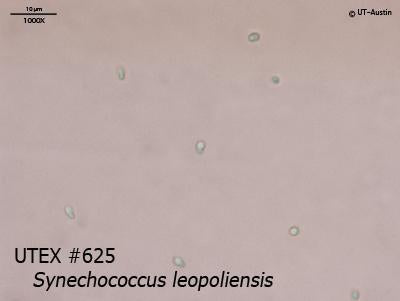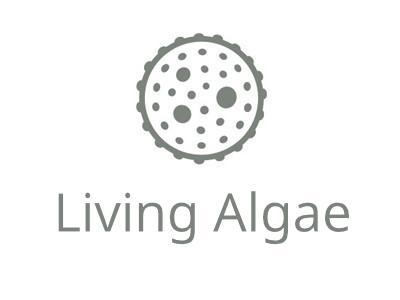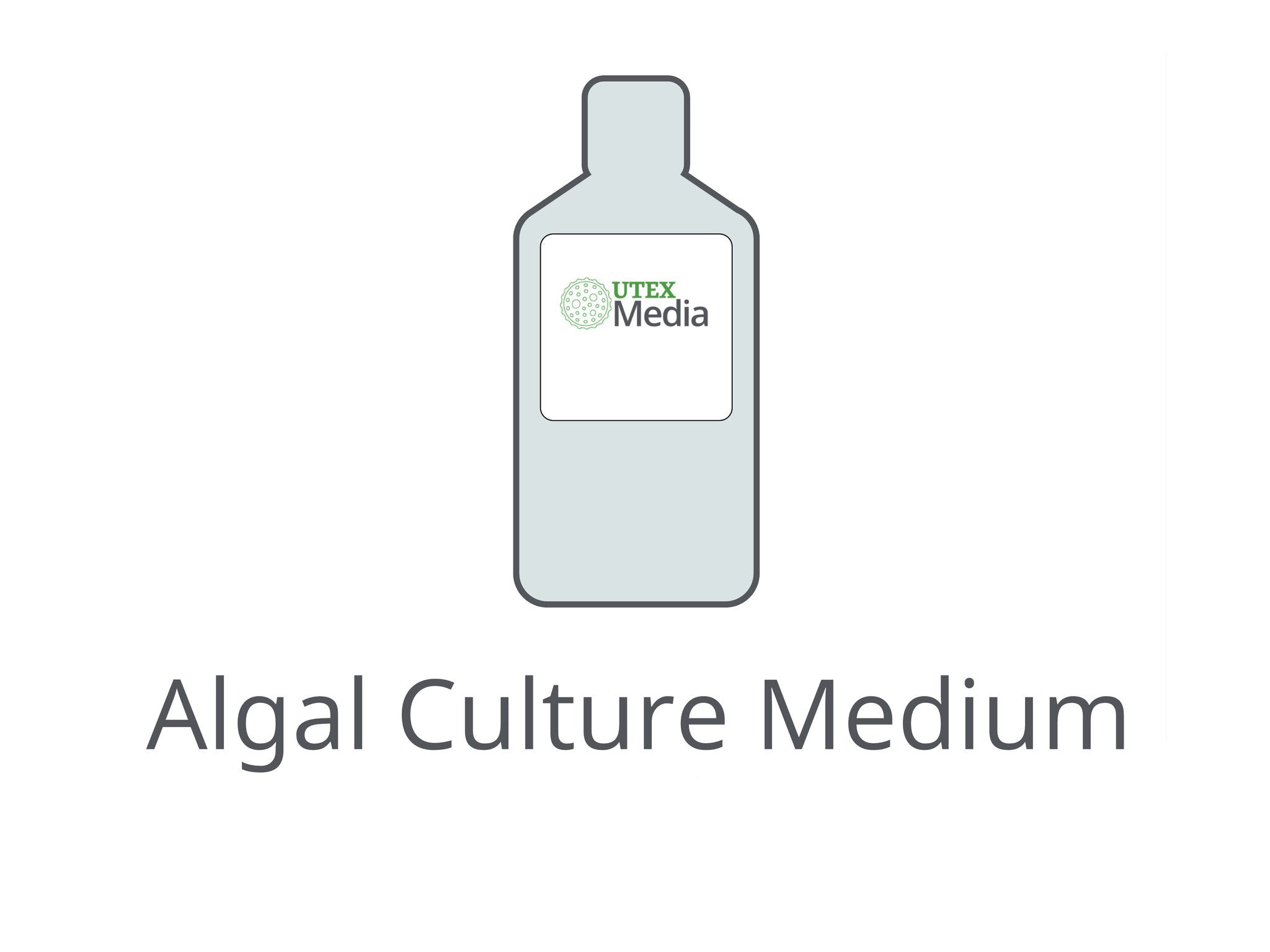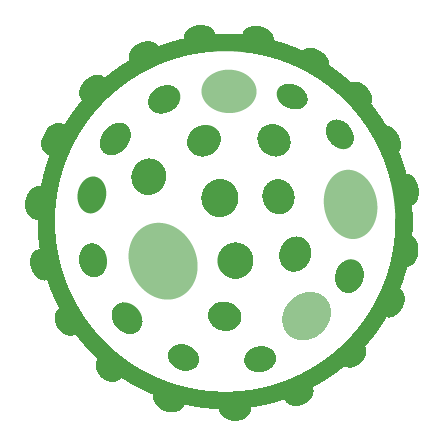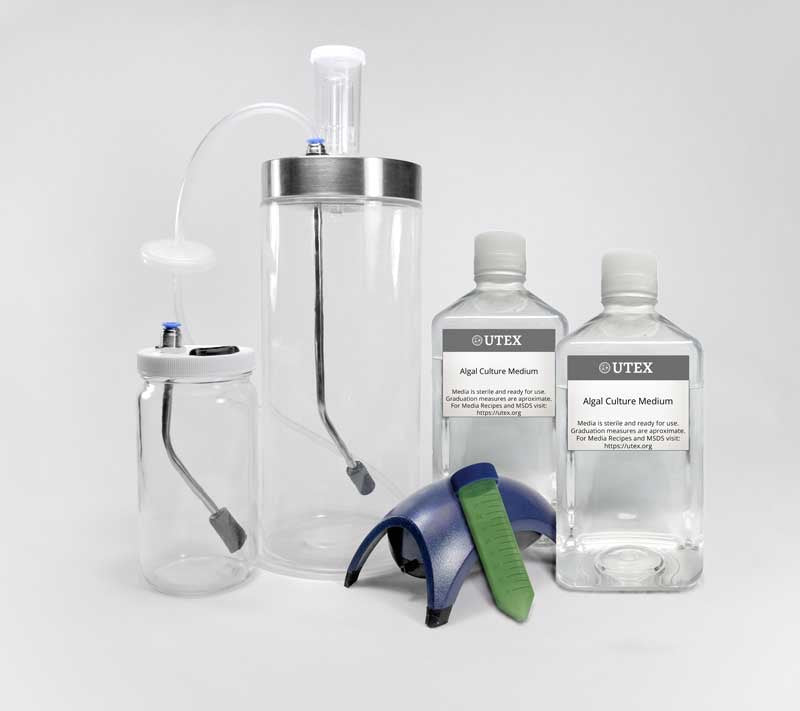General Maintenance Conditions
| Temperature: | 20 °C |
| Light source: | mix of warm-white & cool-white fluorescent lamps |
| Intensity: | 3200 lux (maximum) |
| Periodicity: | 12/12 h L/D |
Those who receive cultures are encouraged to duplicate within reason the conditions used in the Collection, when handling newly acquired cultures, to reduce the chance of losing the culture. After a stock culture is established, subcultures may be used for testing other conditions. These general maintenance conditions are not our recommendations to achieve optimal growth rates and large quantities of algae. Information on the best growth conditions and media must be acquired in other literature or through careful experimentation. For additional details on the long-term culture maintenance conditions utilized at UTEX, visit the Culture Maintenance Guides page.
Preparation of Living Algal Strains For Orders
For agar cultures, strains are transferred to the surface of fresh agar slants in 20 mm diamter glass screw-cap tubes in preparation for shipment. The fresh inocula are grown in a diurnal light cycle for at least 3 days until a macroscopically visible lawn appears.
Agar and liquid cultures are packaged within a Styrofoam box and shipped the same day they are packaged.
One tube of agar or liquid culture constitutes an order for a single culture of a single strain of living algae. UTEX makes no attempt to quantify the number of organisms or other characteristics of the culture. UTEX only guarantees the identity of the organism as specified in the strain history.
